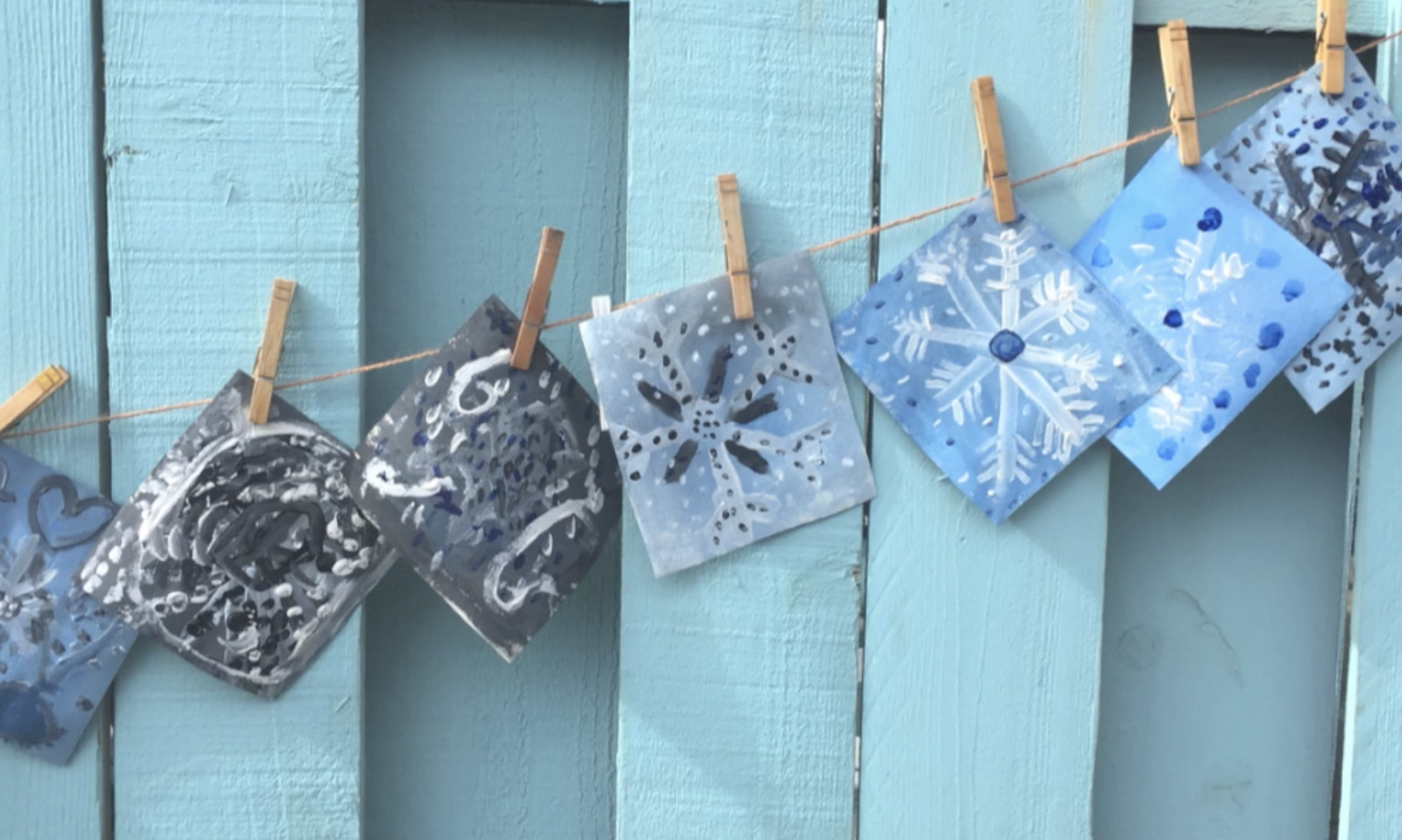Idea #1: Leaf Crayon Rubbing
Check out the video above for full details, or follow the instructions below.
Simple Steps:
- Place leaf facing down, vein side up.
- Place white paper on top of leaf.
- Hold paper and leaf firmly so they don’t move.
- Take crayon and start rubbing over the leaf area.
- The impression of your leaf should show up!

Idea #2: Leaf Pressing
Pressing leaves is a wonderful way to teach children how botanists preserve specimens. This activity can lead to many different types of art projects can down the road, such as leaf painting (see Idea #3, below). You can also let children come up with their own ideas of what to do with their pressed leaves once they’re done.
Simple Steps:
- Gently wipe off any dirt from the leaf.
- Place the leaf between newspaper sheets or in pages of a book.
- Place a note card with the date collected and any information gathered about the leaf, in a safe place so that you can retrieve it once the leaf is pressed.
- Pile a small stack of heavy books on top of the pages and press for 1 to 24 hours.

Idea #3: Leaf Painting
Allow your students to use leaves as a canvas and get creative with paint.
Simple Steps:
- Press leaves first—they are easier to paint when flattened.
- Select bright paint colors—acrylic, tempera, gauche, or craft paint will work best.
- Paint leaf with paintbrush as desired.
- Set aside to dry, then decorate note cards or other art projects with them.

Idea #4: Clay Leaf Fossils
A great way to show children how fossils are created is by compressing leaves into wet clay!

Simple Steps:
- Roll out a flat slab of clay with a rolling pin. Use air dry model clay (which dries overnight), or white polymer clay (bakes to harden).
- Place leaf, with veins facing down, onto the clay and firmly but gently press the compression by hand or with a rolling pin.
- Carefully remove the leaf by pulling it by the stem.
- Bake or leave to air dry.
Optional: paint fossil







The key to coming up with more engaging and exciting projects is understanding how kids learn and what would interest them. I’m launching an online course—The Art Teaching Blueprint—that teaches you everything you need to know about teaching art in a Montessori classroom and break it down into bite-sized videos so you can go through them at a pace that works for you. To get on the wait list and be notified when registration opens, click here!


One Step Further: Download My Fall Leaf Inspiration Print
I personally think the fall season can give us hundreds of art activity and project ideas, but just to make it even easier on you (which, really, is such a joy because I get to share my love of both fall and art with you!), I’m giving you a FREE Fall Leaf Inspiration Print.
You can print it out and use it on your art shelf or hang it in your inspiration gallery to during the season, or let students fill it in with beautiful colors. It seems like a simple tool, right? But trust me, it’ll lead to so many amazing, creative artworks! Download the Fall Leaf Inspiration Print by clicking here.
A Short Cut Just for You
Of course, fall is just one season of the school year. If you want the tools to be able to come up with art activities all year long, you need the foundation of understanding how children are able to learn art. In my online course, Art Teaching Blueprint, I give you everything you need to easily start teaching art to your your Montessori students.
And fall registration for Art Teaching Blueprint is about to open!
I’ve been helping Montessori teachers all over the world bring art into their classroom for more than 20 years. And I’ve honed and perfected my own art teaching method, and have developed it to complement and support Montessori philosophy, so that you can start teaching art in your classroom too. From setting up a proper art environment and art shelf, to giving your students age-appropriate mediums to explore with, I cover everything a Montessori teacher needs to know.
I’m so excited to be opening up the course one more time for this year! You can sign up for the course starting November 1. But if you want a reminder, and to save your seat now, click here to join the waitlist!

Sign-up to receive video
The Phases of Art Development is a quick digital course that explains how art making can help students develop their creativity, fine-motor skills, and focus. More importantly, I share what types of projects students at every age are capable of completing safely, and without making a mess.
Best of all—it’s free! To sign up for the course, click here.


All rights reserved © 2025, Nature of Art®
No part of this blog may be used or be reproduced in any manner whatsoever including reproducing, publishing, performing, and making any adaptions of the work – including translation into another foreign language without written permission except in the case of brief quotations embodied in critical articles and reviews. Nature of Art® Publishing P.O. Box 443 Solana Beach, California 92075.


































